St Brendan’s Church, Corrandulla
By Paul Greaney
The foundation stone for St Brendan’s was laid in 1831, under the direction of parish priest Rev. Raymond Hargadon. The building was part of a wave of new churches built throughout the country following the relaxation of the Penal Laws under the Roman Catholic Relief Act of 1829. The church is actually located in the townland of Carrowbeg South, and replaced a thatched chapel in Corrandulla townland, the ruins of which can be seen in the present cemetery. The site appears to have been supplied by the Blake family of Cregg Castle, who later provided the adjoining site for the Franciscan Monastery and Boys’ School. The church is built to a standard cruciform plan, and consists of a two-bay double-height nave opening into single-bay transepts centred on the chancel, with a pitched slate roof, and with a single-bay three-stage tower on a square plan attached to the main entrance.
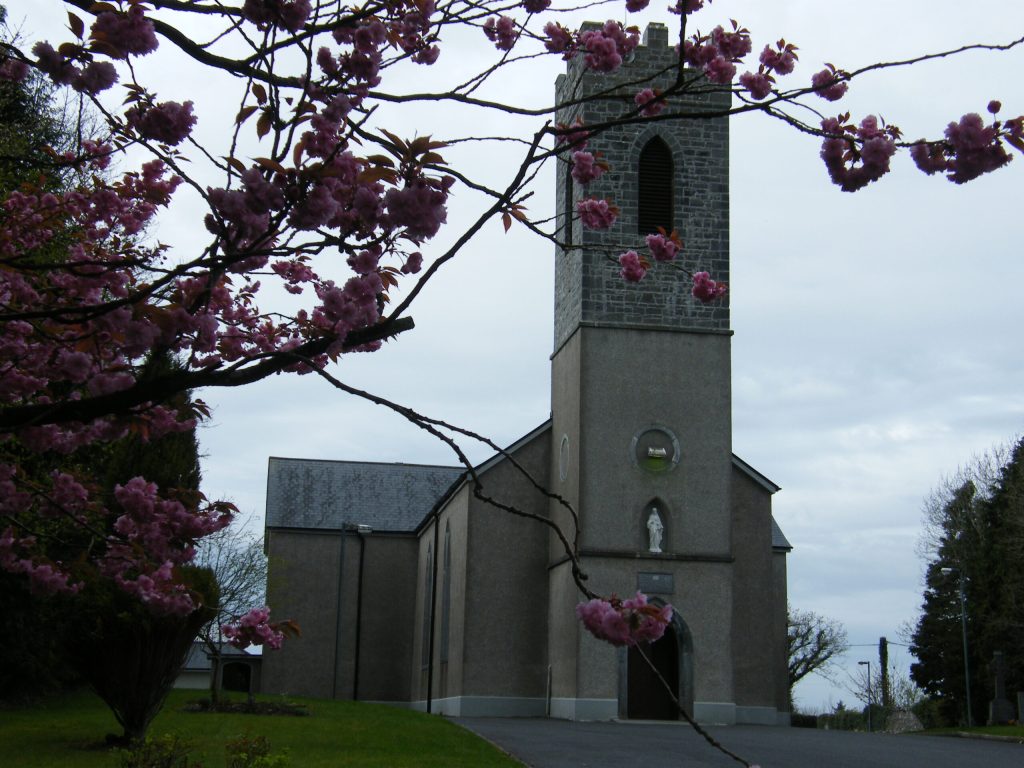
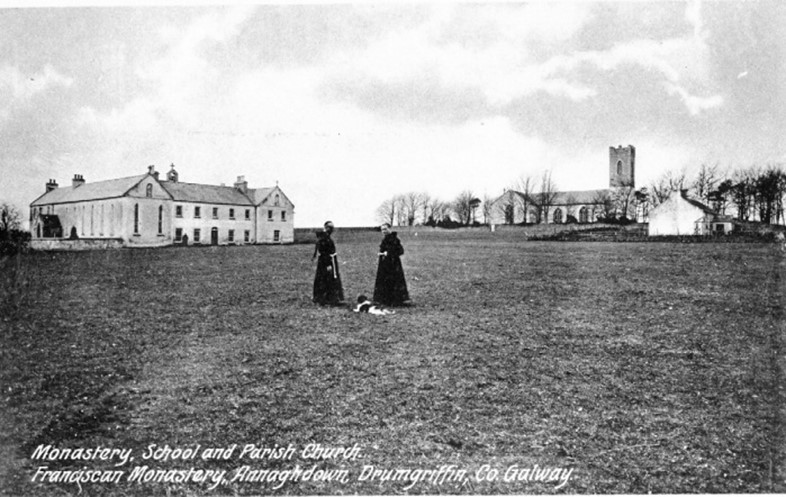
The earlier chapel in the present cemetery was also dedicated to St Brendan, according to an 1809 list of clergy, which describes Rev. Raymond Hargadon as ‘Parish Priest of the church of St Brendan in Annadown’. This Rev. Hargadon, who died in 1824, was an uncle of the man who oversaw the construction of the church. He is buried near the ruins of the old chapel, where a headstone bears the inscription ‘Beloved brethren this spot I now select for my grave, as I prayed for your eternal welfare these 30 years. I humbly beg in return you pray God may grant me your poor Pastor the death of a sincere penitant. Raymd Hargadon AD 1818’.
The foundation stone of the new church reads ‘My house shall be called the house of Prayer, saith the Lord, and all things whatsoever you shall ask in Prayer, Believing, you shall receive. St. Matw. Chap. 21 Vrs. 13 & 22 ~ Erected by the Exertions of The Revd. R. HARGADON PP & Parishioners A.D 1831’. An 1837 announcement in the Galway Patriot requested tenders ‘for completing the Roman Catholic Chapel of Annadown, the Walls of which are newly built. None but competent persons need apply, with solvent security as to the fulfilment of the contract.’ The main part of the construction work was eventually completed by 1838 under the supervision of Rev. Thomas Loftus, who succeeded the younger Rev. Hargadon upon his death in 1833. Rev. Loftus died in 1839 and was in turn succeeded by Rev. Myles Sheridan.

Fundraising was conducted locally by means of regular contributions from parishioners. Parish records give a detailed account of monies collected throughout the parish between 1840 and 1844, from the landed gentry to cottiers whose memory would later be wiped from the landscape during the Great Hunger. Occasional payments are also recorded from individuals in America.
The building at that stage had a much simpler appearance than the modern structure – the tower, sacristy, and of course, the Millennium Chapel, were added much later. According to tradition, the rafters were in place on Oíche na Gaoithe Móire, the Night of the Big Wind, 6 January 1839, and survived the storm. Work was still underway in autumn 1840 under Rev. Sheridan, who recorded payments to Mr Finney of Galway for one and a half tons of slates and tiles; to Pat Forde, labourer; Patrick Kilkelly, nailor; as well as payments of 2s 6d for lime and 7s for hire of a cart man. Further payments are recorded in December 1840 to Owen Commons, labourer; Daniel Connor; Mr Townsend; John Kilkelly, nailor; Pat Connor; and ‘the slater’. Payments to the same group of individuals are recorded in March 1841, as well as amounts paid to Michael Carr for lime and to John Delaney, slater. Later payments are recorded to Pat Ford, labourer, John Coen, stonecutter, Mr Clogherty, and Mr O’Grady, glazier. Brothers James and John Rabbitt of Lackaghbeg, who were noted stonecutters, walked from their home in Turloughmore to Corrandulla to start work at 8am each morning in the 1830s. James later settled in Drumgriffin, and his son James subsequently worked on building the presbytery in the 1880s.
Enhancements and renovations to the church continued over the subsequent decades, with the addition of the belltower in 1890, the sacristy to the rear in 1920, and the altar in 1921. It is likely that the church was sparsely furnished initially. When pews were first added they extended only half way down the church. Patsy Furey of Bunatober later donated pews for the remainder of the church. Re-roofing proved necessary in 1939 due to woodworm, at which time a gallery to seat 120 people was added to the rear of the nave. Two confessionals, new Stations of the Cross, a new bell, statues, and a new sanctuary floor were also added at this time, as was the Calvary grotto in the grounds. Archbishop Joseph Walsh blessed the Stations of the Cross, Calvary grotto, and bell on two visits in March and April 1940. Further changes took place in 1966, when new altar rails were added (later removed), as well as a porch at the transept entrance; a storeroom, and a toilet. The grounds were also tarmacadamed, and shortly afterwards the church was replastered and painted, and the pews were replaced. The church floor was also carpeted around this time, covering a timber floor in the nave and concrete floors in the transepts.

Following the arrival of Fr Martin Newell as parish priest in 1989, the church was again redecorated and re-carpeted, and the present stained glass windows were installed, supplied by Geraghty Joinery of Carraghy and Greaney Glass of Carnmore. A decade later the Millennium Chapel was constructed, primarily for use as a mortuary chapel, to remove the need for parishioners to travel to funeral homes in Galway or elsewhere. It was designed by PJ Newell of Headford, and a stained glass window depicting the Apparition at Knock was later added to the porch in remembrance of Archdeacon Cavanagh of Gortroe and Knock.
Renovations were undertaken again in 2009 under the supervision of Fr Hugh Loftus, with a committee consisting of Mary Gilmore, Tom Kearney, and Ritchie Reddington. The work included re-roofing of the tower, together with removal of cement pointing and repointing of the stonework with lime mortar; removal of intermediate flooring and joisting and addition of a hardwood ceiling to the entrance hall underneath the tower. The main attic of the church was also insulated, gutters and downpipes were restored and remounted, and overhead power lines were moved underground. The interior was then painted and re-carpeted. The stone baptismal font, commissioned by Rev. Ansbro in 1887, was moved back to the right side of the altar, having been placed inside the gate of Corrandulla Cemetery for some years previously.






Rev. Thomas Loftus died in 1839, having overseen much of the construction work. The church has been under the care of thirteen parish priests since then: Myles Sheridan (appointed 1840, transferred to Louisburgh in 1847), Thomas Keaveney (appointed 1847, died January 1858), Peter Waldron (appointed July 1858, died January 1877), Laurence Ansbro (appointed March 1877, died March 1910), Thomas Hosty (appointed April 1910, died November 1920), Michael Hannon (appointed 1920, died August 1928), Edward Canon McGough (appointed December 1928, transferred to Newport, June 1940), Patrick Garvey (appointed June 1940, died August 1963), Thomas Martin (appointed 1963, retired July 1980, died November 1980), Patrick Vincent O’Brien (appointed 1980, died June 1989), Martin Canon Newell (appointed 1989, retired to Claran in 2006, died January 2023), Hugh Loftus (appointed 2007, transferred to An Cheathrú Rua, 2018), and Seán Cunningham (the incumbent, appointed 2018). The parish priest’s residence from 1886 until the 1990s was at the presbytery, known as St Brendan’s, in Carrowbeg South. Prior to this, the priest’s residence was a thatched cottage in the townland of Mullaghadrum, opposite Drumgriffin boreen. The curate also resided in Corrandulla until the curate’s residence adjoining Annaghdown Church was constructed in 1906. In 1901 the curate was Rev. John O’Dea, who lived in a cottage in Gortroe, on the landholding of William Hession who lived in the next house.
Several burials are marked in the church grounds: parish priests Laurence Ansbro, Thomas Hosty, Michael Hannon, Patrick Garvey, Thomas Martin, Patrick V. O’Brien, and Martin Newell are buried near the main door, as is Rev. Thomas Greaney of the Diocese of Jefferson City, a native of Glenrevagh, who died in Mississippi in 1967. Several of the nineteenth century parish priests are buried within the church, in the transept near the entrance to the Millennium Chapel. A large brass cross on the floor marked one of these burials until the concrete floor was carpeted in the mid-1960s. Several others are buried under the present choir seating area. Members of the Blake families of Cregg Castle and Annaghdown House are buried behind the church, where an underground vault was constructed in the nineteenth century.
Thanks to Kathleen O’Shea (grandniece of James Rabbitt the younger) for useful information on the Rabbitts’ contribution to the church construction, and for her recollections of the church; and to Br Conal Thomas for information and photographs.
Sources
- H. Fenning. The Parish Clergy of Tuam 1712-1809, Collectanea Hibernica, 39/40 (1998), pp. 155-175.
- Annaghdown Parish Register, 1840-1844.
- Tom Kearney, Renovations to St. Brendan’s Church, Corrandulla. Anach Cuain 2010.
- Kathleen O’Shea, Reflections on the Past. Annaghdown Heritage Society Newsletter, Issue 3, Winter 2018.
- National Inventory of Architectural Heritage: Saint Brendan’s Catholic Church, Carrowbeg South.
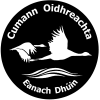
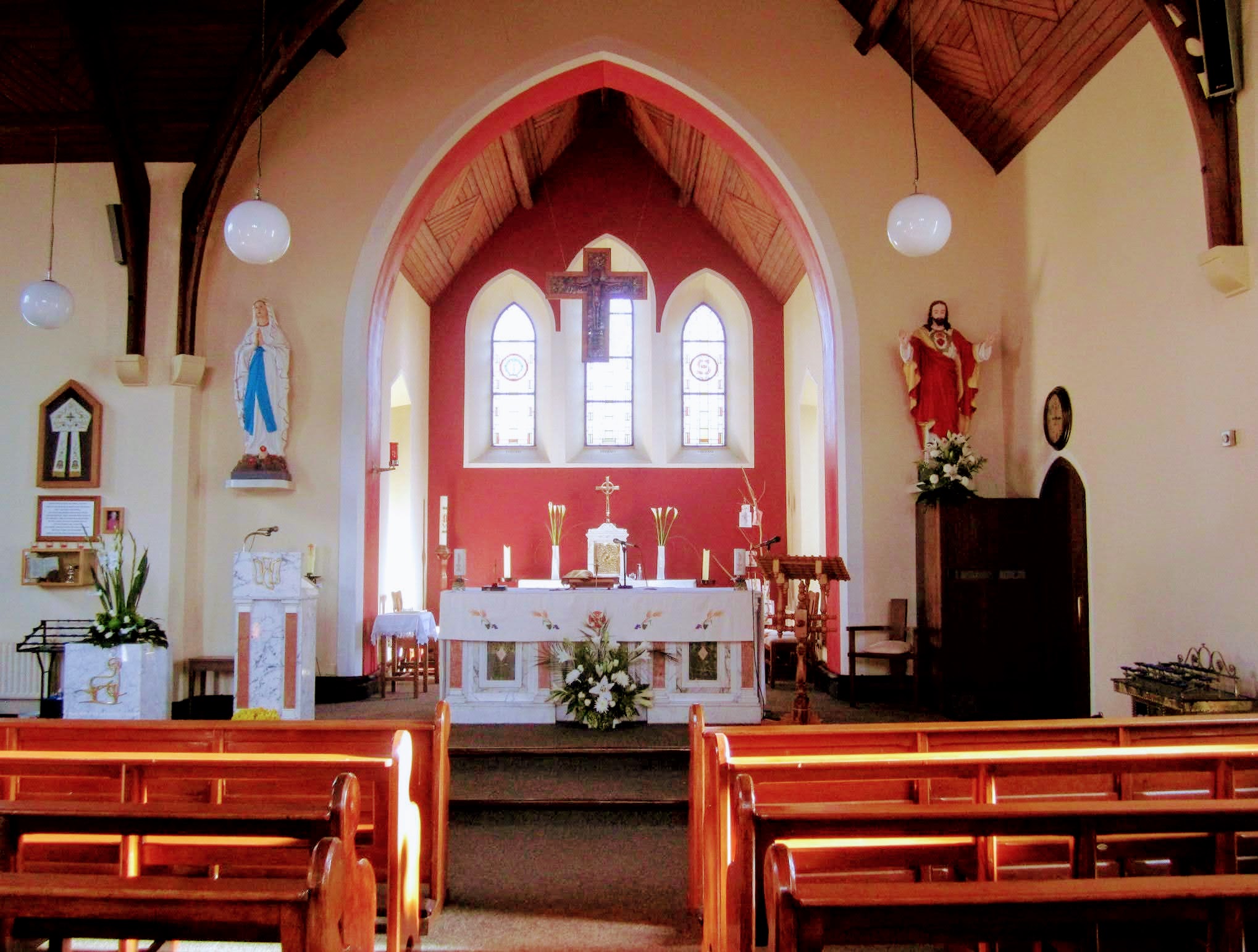

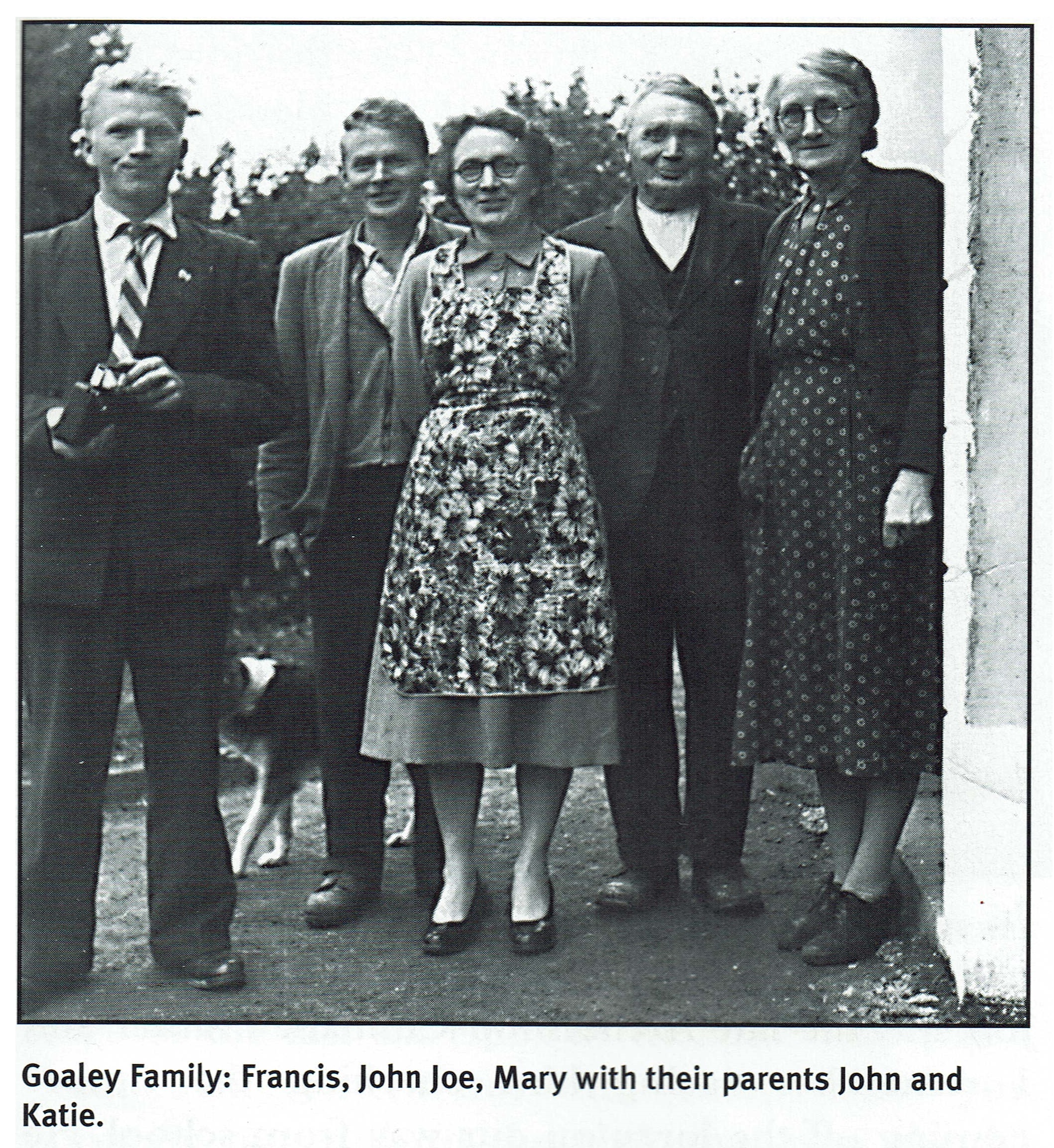
Lovely incredible memorial to this area where my Flaherty Burke and O’Neill families lived
Would very much like to see the parish registry of 1844 mentioned above. Again thank you for sharing!
Interesting reading on the development of the Church through all the different phases it should be noted that windows supplied Geraghty Joinery and glass was supplied by Greaneys